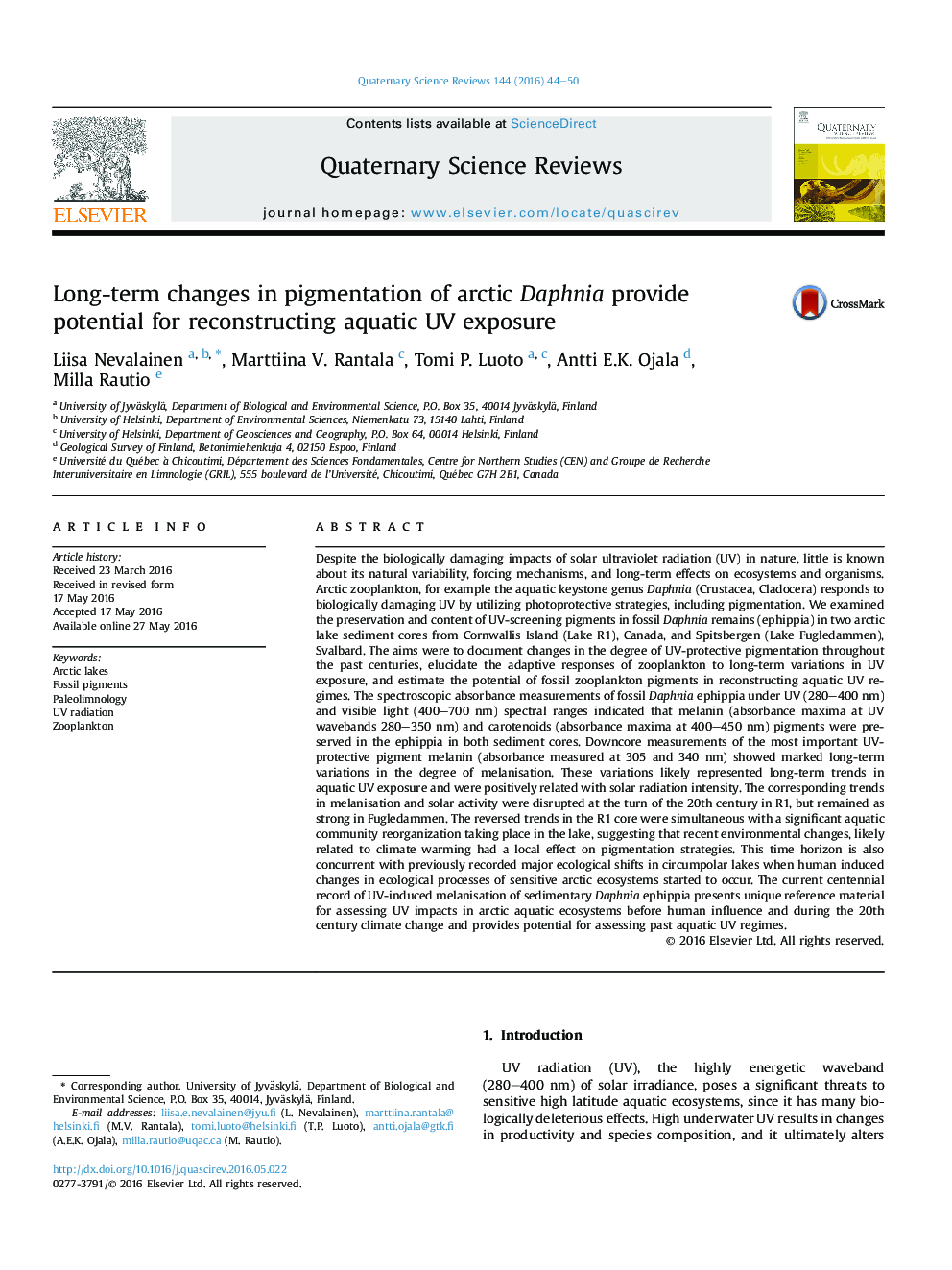| کد مقاله | کد نشریه | سال انتشار | مقاله انگلیسی | نسخه تمام متن |
|---|---|---|---|---|
| 4735980 | 1640791 | 2016 | 7 صفحه PDF | دانلود رایگان |

• Arctic zooplankton responds to deleterious UV by photoprotective pigmentation.
• Pigment preservation was examined in fossil zooplankton in Arctic lake sediments.
• UV-protective melanin and carotenoid pigments were found from fossils.
• Long-term melanisation trends represented past aquatic UV regimes.
• Aquatic UV changes in the Arctic were related to solar activity and climate change.
Despite the biologically damaging impacts of solar ultraviolet radiation (UV) in nature, little is known about its natural variability, forcing mechanisms, and long-term effects on ecosystems and organisms. Arctic zooplankton, for example the aquatic keystone genus Daphnia (Crustacea, Cladocera) responds to biologically damaging UV by utilizing photoprotective strategies, including pigmentation. We examined the preservation and content of UV-screening pigments in fossil Daphnia remains (ephippia) in two arctic lake sediment cores from Cornwallis Island (Lake R1), Canada, and Spitsbergen (Lake Fugledammen), Svalbard. The aims were to document changes in the degree of UV-protective pigmentation throughout the past centuries, elucidate the adaptive responses of zooplankton to long-term variations in UV exposure, and estimate the potential of fossil zooplankton pigments in reconstructing aquatic UV regimes. The spectroscopic absorbance measurements of fossil Daphnia ephippia under UV (280–400 nm) and visible light (400–700 nm) spectral ranges indicated that melanin (absorbance maxima at UV wavebands 280–350 nm) and carotenoids (absorbance maxima at 400–450 nm) pigments were preserved in the ephippia in both sediment cores. Downcore measurements of the most important UV-protective pigment melanin (absorbance measured at 305 and 340 nm) showed marked long-term variations in the degree of melanisation. These variations likely represented long-term trends in aquatic UV exposure and were positively related with solar radiation intensity. The corresponding trends in melanisation and solar activity were disrupted at the turn of the 20th century in R1, but remained as strong in Fugledammen. The reversed trends in the R1 core were simultaneous with a significant aquatic community reorganization taking place in the lake, suggesting that recent environmental changes, likely related to climate warming had a local effect on pigmentation strategies. This time horizon is also concurrent with previously recorded major ecological shifts in circumpolar lakes when human induced changes in ecological processes of sensitive arctic ecosystems started to occur. The current centennial record of UV-induced melanisation of sedimentary Daphnia ephippia presents unique reference material for assessing UV impacts in arctic aquatic ecosystems before human influence and during the 20th century climate change and provides potential for assessing past aquatic UV regimes.
Journal: Quaternary Science Reviews - Volume 144, 15 July 2016, Pages 44–50